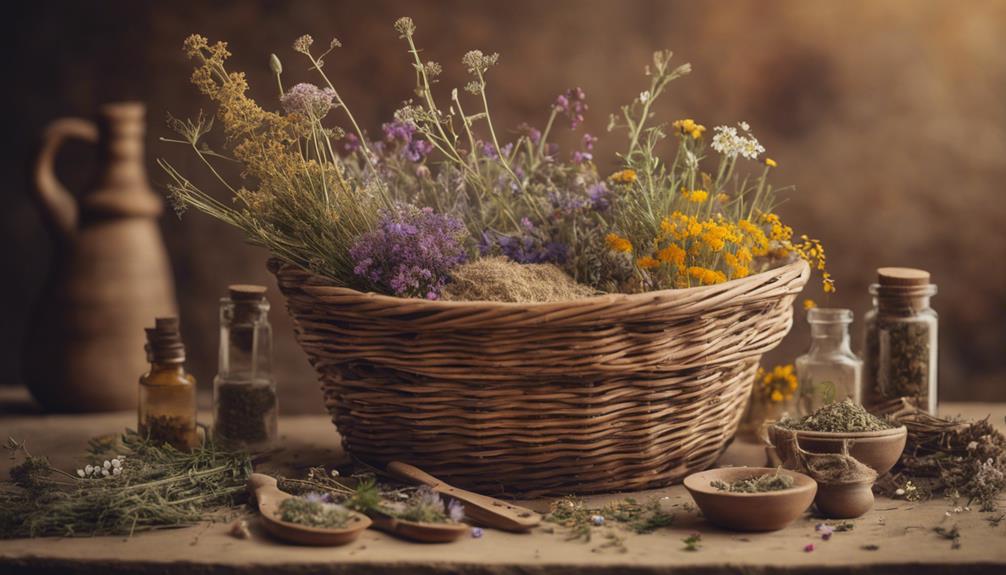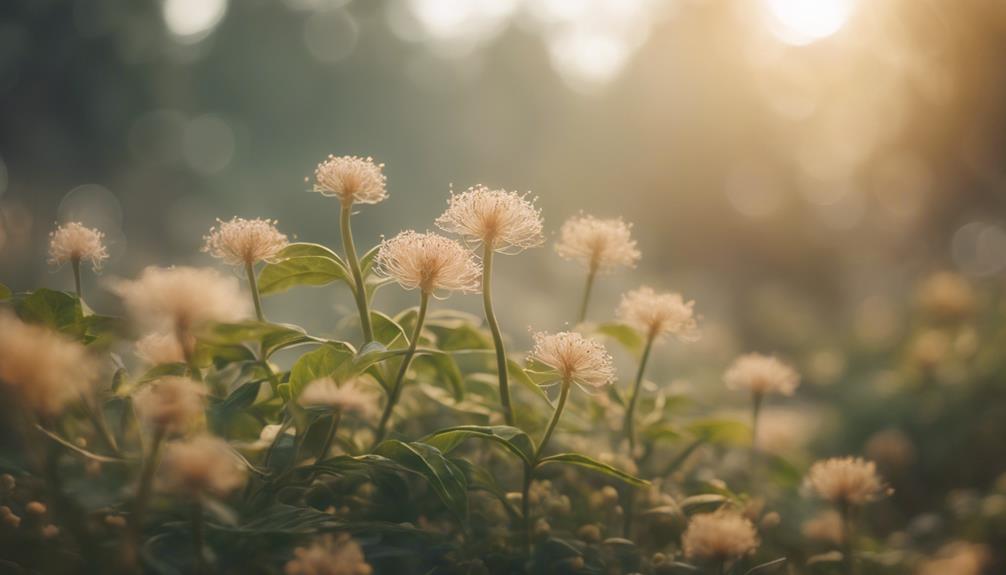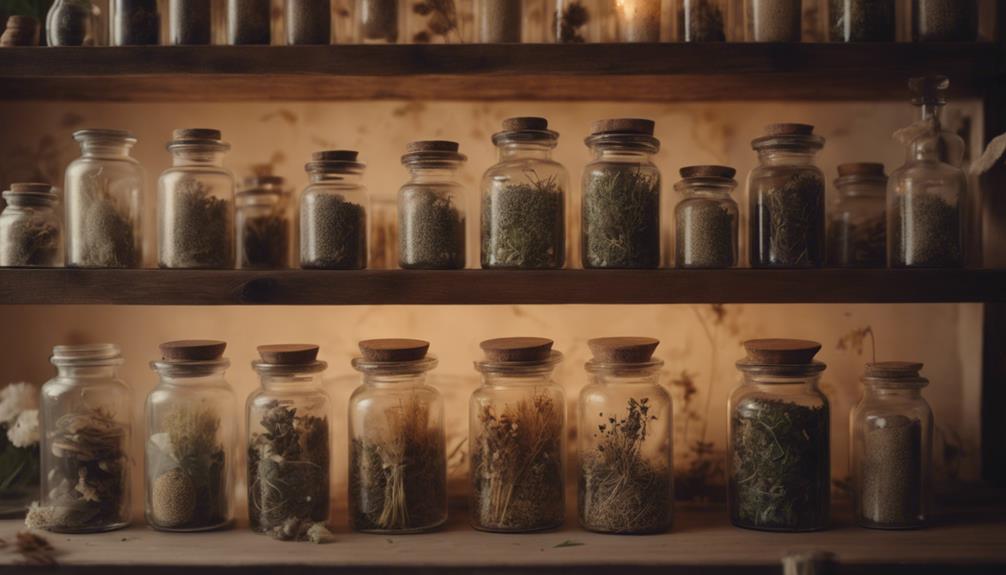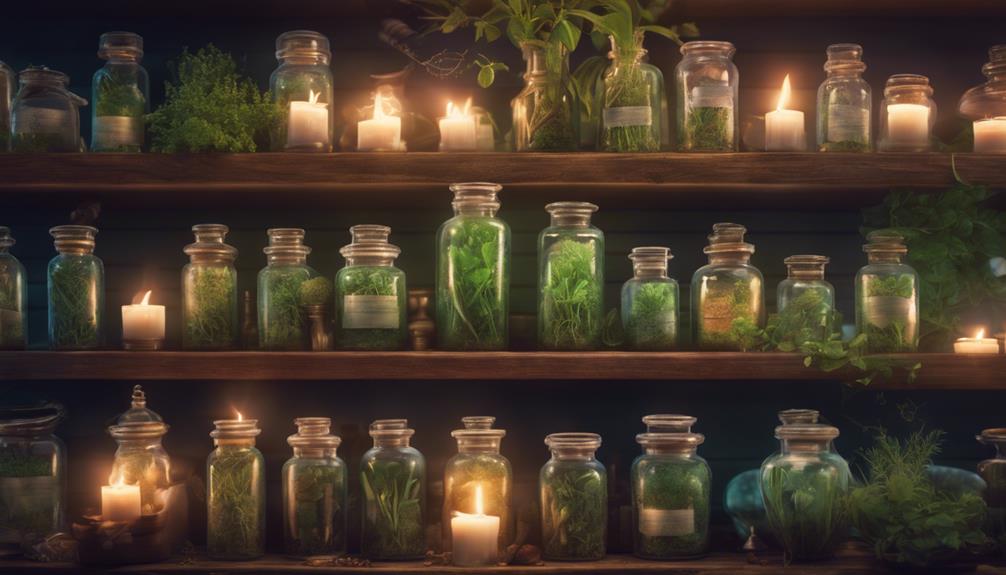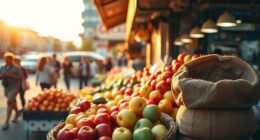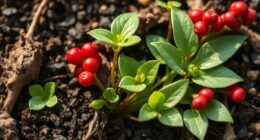As we build our herbalism kit, we need to focus on the essentials. Clippers for harvesting, a mortar and pestle for grinding, and vials for liquid components are must-haves. Containers like amber glass jars, clear glass bottles, and glass dropper bottles help safeguard our remedies. We'll also need measuring cups and spoons, a digital scale, and a labeling system. Additionally, herbal identification guides, mortar and pestle essentials, and drying and preserving tools are crucial. By gathering these items, we'll be well-equipped to create effective remedies. As we explore the world of herbalism, we'll discover the intricate details that elevate our craft.
Key Takeaways
• A well-stocked herbalism kit should include essential tools like clippers, mortar and pestle, and measuring cups for precise preparation.
• Containers such as amber glass jars, clear glass bottles, and glass dropper bottles are necessary for storing herbal remedies.
• Herbal identification guides are crucial for plant identification, categorization, and understanding medicinal properties and sustainable harvesting practices.
• A mortar and pestle is a fundamental tool for grinding and crushing herbs, with options available in stone, ceramic, and metal materials.
• Accurate measurements are critical, and a digital scale, apothecary scales, and measuring cups are necessary for crafting safe and effective potions.
Essential Tools for Herb Preparation
As we begin preparing our herbal remedies, we need to gather the essential tools that will help us harvest, process, and store our herbs with precision and care.
When it comes to building our herbalism kit, we can't overlook the essential tools that will make all the difference in the quality of our remedies.
First and foremost, we need clippers to carefully cut our herbs during harvesting, ensuring minimal damage to the plant.
Next, a mortar and pestle are vital for grinding our herbs into powders or pastes for various remedies and potions. These tools allow us to process our herbs with precision, releasing their active ingredients for best results.
Additionally, we'll need vials to contain liquid components like extracts, oils, or tinctures in precise measurements for our herbal preparations.
Containers for Herbal Remedies
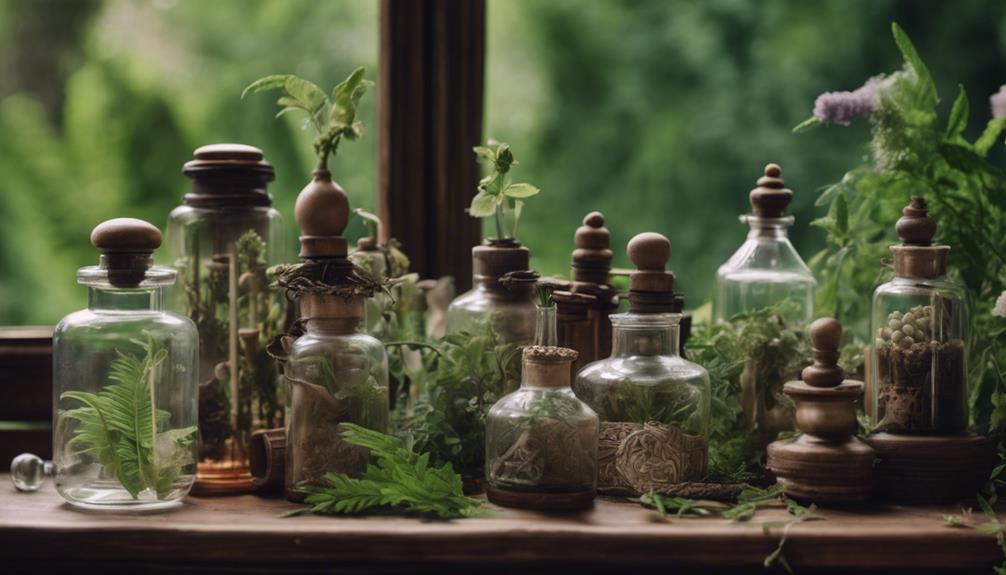
As we assemble our herbalism kit, we're now turning our attention to the essential task of storing our herbal remedies.
We'll explore the significance of selecting the right containers, including glass storage options that safeguard our remedies from light and moisture, as well as a labeling system that guarantees we can easily identify and track our herbal concoctions.
Glass Storage Options
We prioritize glass storage options to safeguard the quality of our herbal remedies, as they provide an ideal environment for preserving potency and freshness. Glass containers help maintain the integrity of our herbal preparations by blocking out light and preventing chemical leaching, which can occur with plastic containers. This guarantees our herbal remedies remain free from contaminates and retain their potency.
| Glass Storage Option | Description |
|---|---|
| Amber Glass Jars | Ideal for storing herbal remedies that require protection from light |
| Clear Glass Bottles | Suitable for storing herbal remedies that don't require light protection |
| Glass Dropper Bottles | Perfect for storing herbal tinctures and essential oils |
Glass storage options are not only effective but also eco-friendly, as they are reusable and reduce waste. We can choose from a variety of sizes, ranging from small vials to larger jars, to accommodate different quantities of herbal remedies. By selecting glass storage options, we can guarantee our herbal remedies remain fresh, potent, and free from contaminants, making them an essential component of our herbalism kit.
Herbalist's Labeling System
To guarantee efficient access and accurate use of our herbal remedies, a well-organized labeling system is crucial for our containers. We recognize that a clear and concise labeling system is essential to prevent confusion and ensure the precise use of our herbal remedies.
When we label our containers correctly, we can quickly identify the contents, which saves us time and reduces the risk of errors. Our labels should include the herb's name, the date of preparation, and any specific instructions or precautions. This information helps us keep track of our herbal remedies and use them safely and effectively.
By organizing our containers with a labeling system, we can easily locate and access the specific herbal remedies we need when we need them. This system also helps us maintain a clean and organized workspace, which is crucial for any herbalist.
Measuring and Weighing Devices
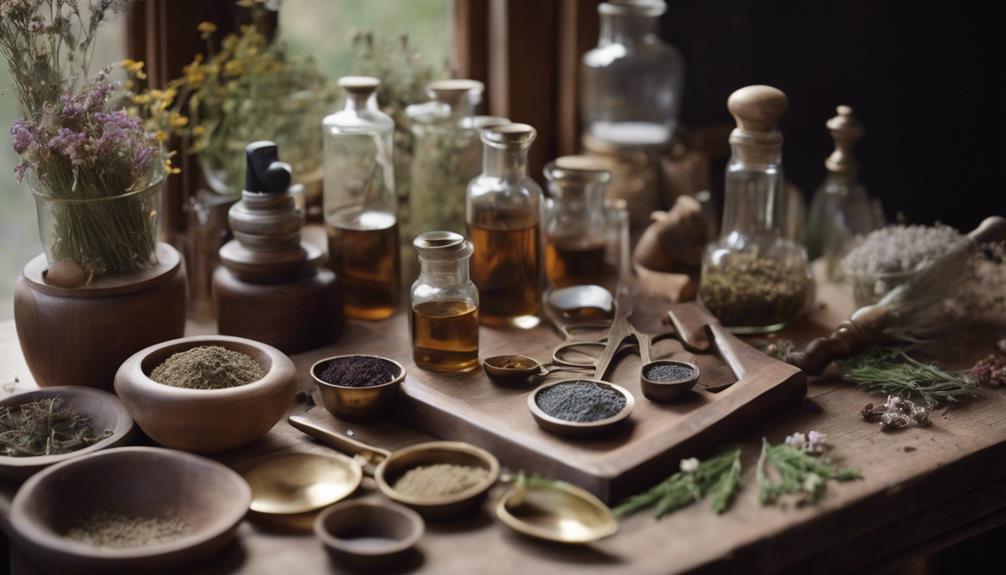
As we assemble our herbalism kit, we recognize the significance of precise measurements in crafting effective potions and remedies.
To guarantee accuracy, we require reliable measuring and weighing devices that provide consistent results.
We'll explore the available digital scale options and accurate measurement tools that will elevate our herbalism practice.
Digital Scale Options
When crafting herbal remedies, we depend on digital scales to provide accurate measurements, guaranteeing the perfect blend of ingredients in every recipe. In herbal crafting, precise measurements are essential to achieve the desired effects, and digital scales offer the accuracy we need. They come in various sizes and weight capacities to cater to different needs, from measuring small quantities of rare herbs to weighing larger amounts of common ingredients.
We appreciate the convenience digital scales offer, providing quick and reliable readings that save us time and effort. Features like the tare function, which allows us to subtract the weight of a container, and auto-off, which conserves battery life, make our herbal crafting process more efficient.
With digital scales, we can focus on blending the perfect recipe, knowing that our measurements are accurate and reliable. By investing in a good digital scale, we ensure that our herbal remedies are of the highest quality, and our customers can trust our products.
Accurate Measurement Tools
We rely on accurate measurement tools, including measuring cups and spoons, to guarantee precise ingredient amounts in our herbal remedies. In our herbalism kit, we prioritize the inclusion of reliable measuring and weighing devices to secure the quality and efficacy of our herbal products.
Measuring cups and spoons are staples in our kit, allowing us to accurately measure ingredient amounts and follow recipes with precision. Additionally, digital scales are essential for weighing ingredients, providing precise measurements that are critical for maintaining consistency and potency in our herbal formulations.
By using standardized measuring and weighing tools, we can enhance the quality and efficacy of our herbal products, ensuring that our remedies are both effective and consistent. In our pursuit of creating effective herbal remedies, we recognize the importance of accurate measurement tools, and we make sure to include them in our herbalism kit.
With these essential tools, we can confidently create herbal remedies that meet our high standards.
Herbal Identification Guides
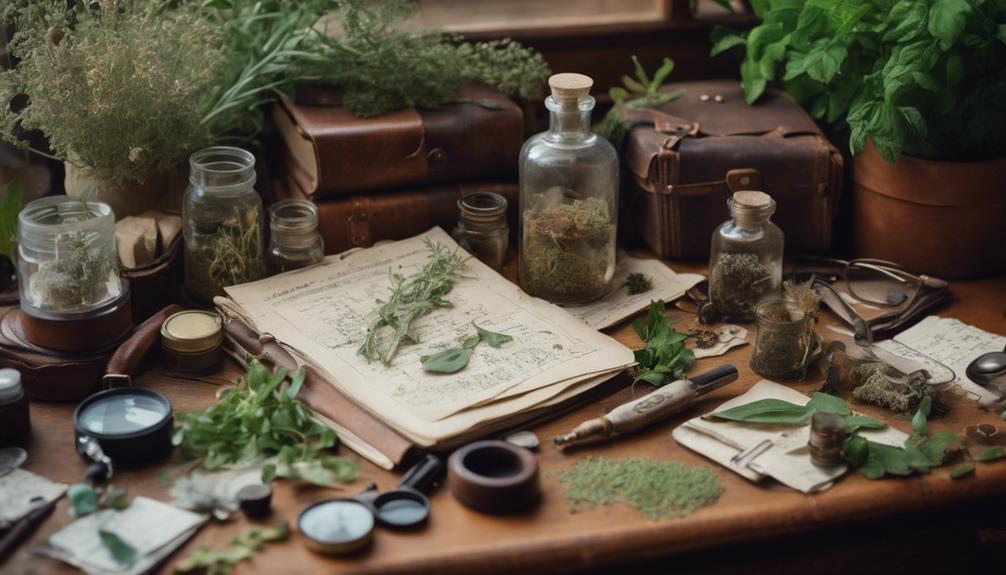
We regularly reach for herbal identification guides to uncover the secrets of various plants, from their physical characteristics and habitats to their medicinal properties and sustainable harvesting techniques. These guides are indispensable for herbalists, providing essential information to identify plants accurately.
With detailed descriptions, photographs, or illustrations, we can confidently identify plants, ensuring we're using the correct species for medicinal or culinary purposes. The guides also categorize plants based on their medicinal properties, such as herbs for relaxation, pain relief, or immune support.
Additionally, they offer valuable tips on sustainable harvesting practices, ensuring the continued growth of plant populations. Whether we're beginners or experienced herbalists, these guides are essential for understanding the complexities of plants and their uses.
Mortar and Pestle Essentials

In our herbalism kit, a sturdy mortar and pestle pair takes center stage, enabling us to tap into the full potential of our herbs by efficiently grinding and crushing them into fine, potent powders. These essential tools allow us to release the natural oils and flavors of our herbs, maximizing their effectiveness. We've found that a mortar and pestle made of sturdy materials like stone, ceramic, or metal can withstand repeated use and provide excellent results.
| Material | Benefits | Uses |
|---|---|---|
| Stone | Durable, easy to clean | Grinding herbs, crushing seeds |
| Ceramic | Non-reactive, gentle on herbs | Mixing herbal blends, making salves |
| Metal | Versatile, easy to store | Crushing roots, making tinctures |
Herbal Storage and Organization
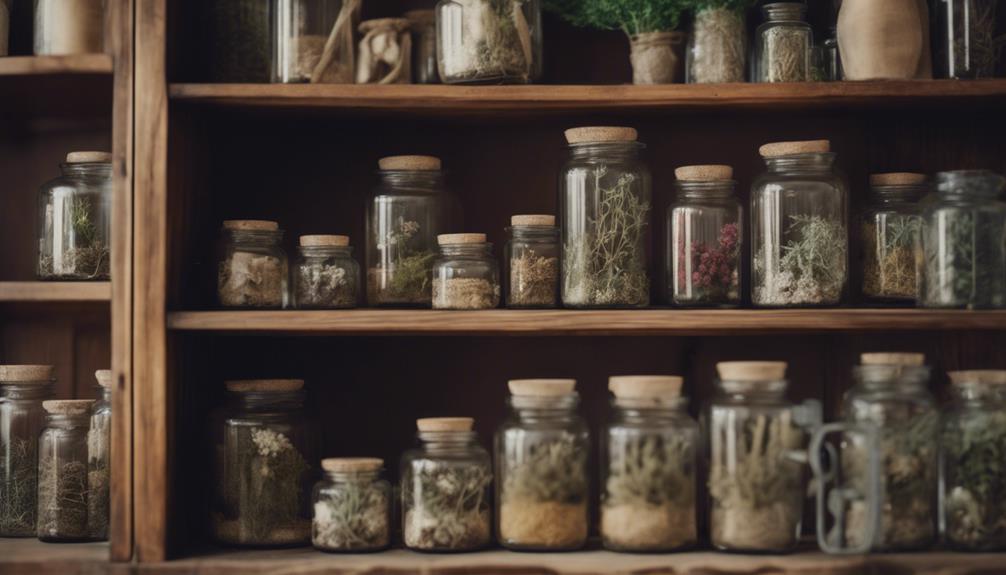
Now that we've got our herbs ground and ready to use, it's time to think about how to store and organize them to maintain their potency and freshness.
We need to guarantee our herbal storage containers are up to the task. Airtight glass jars, labeled pouches, and sealed vials are all great options to keep our herbs fresh.
When it comes to organizing our herbs, we like to categorize them by type and use, such as medicinal herbs, cooking herbs, and aromatic herbs. This makes it easy to find what we need when we need it.
To keep our herbs visible and easily accessible, we utilize storage solutions like herb racks, shelves, and cabinets. By labeling our storage containers with the herb name, date, and usage instructions, we can prevent confusion and ensure proper identification.
With our herbs neatly organized and stored, we can focus on creating effective remedies and enjoying the benefits of herbalism.
Drying and Preserving Tools
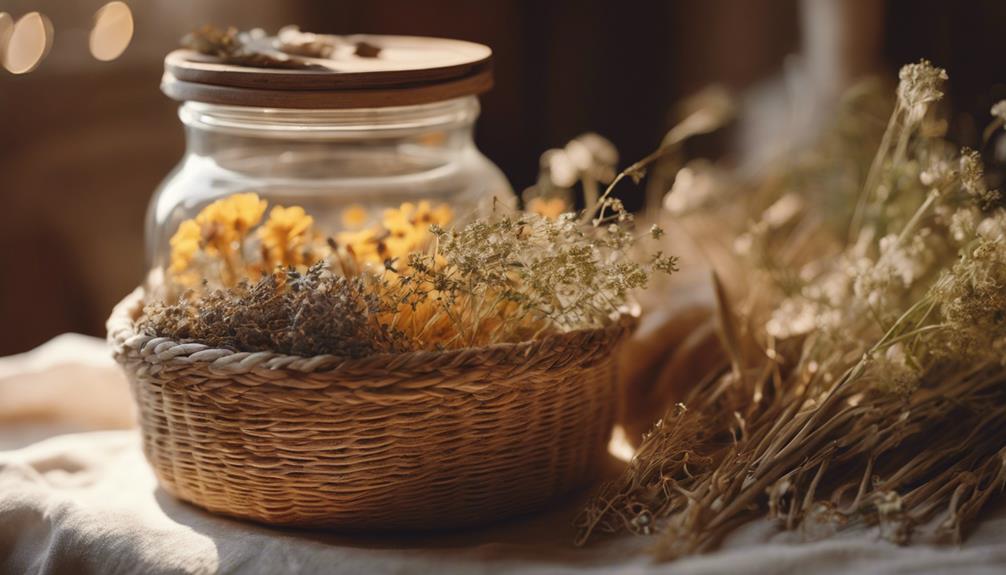
As we progress in building our herbalism kit, we're now going to focus on the essential tools for drying and preserving herbs.
We'll explore the various methods for preserving herbs, including air drying, dehydrator options, and ways to keep herbs fresh for a longer period.
Air Drying Methods
We rely on air drying as a fundamental method for preserving herbs, flowers, and other plant materials in our herbalism kit. This tried-and-tested approach allows us to maintain the integrity and potency of our botanicals while ensuring their longevity.
To facilitate the air drying process, we utilize essential tools such as drying racks, mesh screens, and hangers. By hanging bundles of herbs upside down in a well-ventilated area, we promote even drying and prevent moisture buildup. Mesh screens, in particular, are essential in preventing mold growth and ensuring that herbs dry uniformly.
Our drying racks, often featuring multiple layers, enable us to efficiently use space while maximizing air circulation around the herbs. As we carefully tend to our herbalism kit, we recognize the importance of air drying methods in preserving the quality and essence of our plant materials.
Dehydrator Options
In addition to air drying, we rely on dehydrators as an essential component of our herbalism kit. They provide an efficient way to dry and preserve herbs for long-term storage and use. Dehydrators are a vital tool in our herbalism kit as they help retain the potency of herbs by removing moisture effectively. This guarantees that our herbs remain potent and effective for our remedies and potions.
When it comes to choosing a dehydrator, we have several options to take into account. Here are a few:
- Stackable tray dehydrators: These are great for small batches of herbs and are often compact and easy to store.
- Box dehydrators: These are larger and more versatile, allowing for multiple layers of herbs to be dried at once.
- Electric dehydrators: These offer precise temperature control, ensuring excellent herb preservation.
- Commercial-grade dehydrators: These are ideal for large quantities of herbs and are often used in professional herbalism settings.
Preserving Herbs Fresh
When it comes to preserving herbs fresh, we rely on a range of tools that help lock in flavor, color, and aroma, from dehydrators and ovens to air-drying racks and specialized containers.
To guarantee our herbs remain potent, we depend on herb-preserving tools like glass jars, airtight containers, and vacuum sealers. These tools help maintain the herbs' natural properties by preventing moisture buildup and contamination.
We also use silica gel packets or rice in storage containers to absorb excess moisture and prevent mold growth. Proper labeling and dating of herb containers with the name and date of harvest are essential in tracking freshness and potency.
Herbal Extract and Tincture Tools
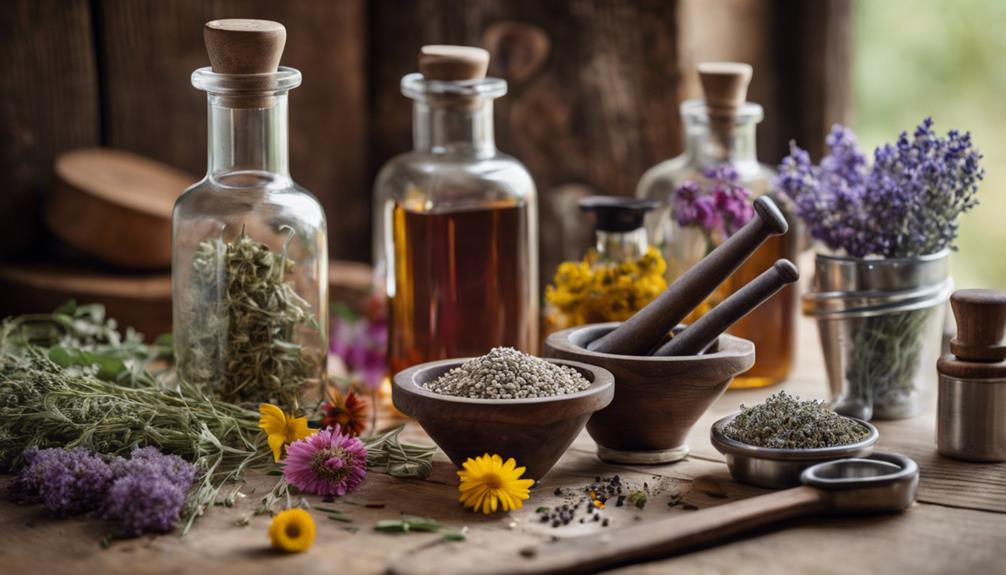
As we explore the world of herbalism, having the appropriate tools for creating herbal extracts and tinctures is crucial. We need to make sure that our tools are precise, sterile, and non-reactive to obtain high-quality extracts.
Here are some essential items to include in our herbalism kit:
- Mortar and pestle: for grinding herbs into a fine consistency
- Glass jars: for storing herbal extracts and tinctures due to their non-reactive properties
- Stainless steel instruments: like measuring spoons and funnels, ideal for precise and sterile herb measurements
- Cheesecloth: for straining herbal concoctions to remove solid particles and obtain clear extracts
These tools will enable us to create potent herbal extracts and tinctures. Mixing bowls and spatulas are also essential for blending herbs with liquid bases.
Apothecary Scales and Measures
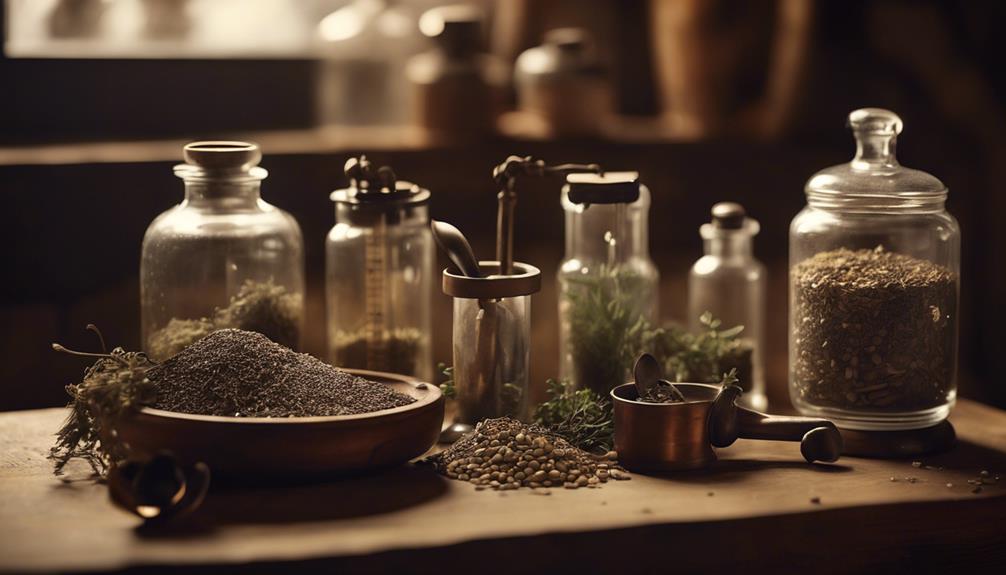
We rely on apothecary scales and measures to guarantee the precision and consistency that our herbal remedies demand. In our herbalism kit, these tools are essential for crafting potions and remedies that are both effective and safe.
Apothecary scales, in particular, allow us to weigh herbs and ingredients with precision, ensuring reliability in our potion making. We use these scales to measure ingredients in grams, ounces, and milliliters, ensuring that our blends are accurate and dependable.
Proper use of apothecary scales and measures is essential for maintaining the potency and effectiveness of our herbal remedies. Without them, we risk compromising the quality of our remedies, which can have serious consequences.
Herbalism Kit Maintenance Tools
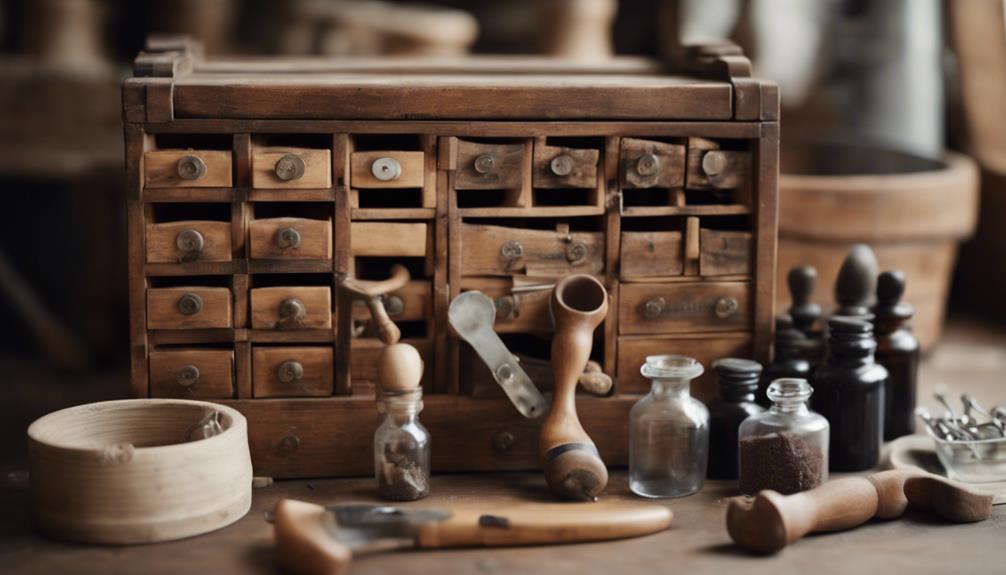
We stock our herbalism kit with stainless steel and glass tools to maintain a clean and contamination-free environment. This is essential for herbalism kit maintenance, as hygiene is key to preventing contamination and ensuring the quality of our herbal remedies.
Here are some essential tools we use:
- Pot: For brewing and mixing herbal concoctions.
- Double boiler: For gently heating and infusing herbal ingredients.
- Measuring cups and spoons: For accurate measurements and precise dosing.
- Funnels: For easy pouring and transferring of herbal mixtures.
These tools aid in the preparation and maintenance of our herbalism kit items, ensuring that every step of the process is contamination-free.
Frequently Asked Questions
What Does a Herbalism Kit Have?
We're often asked what a herbalism kit typically includes. In our experience, a standard kit usually contains:
- Clippers for harvesting herbs
- A mortar and pestle for grinding and mixing
- Pouches for storing dried herbs
- Vials for holding prepared remedies
These tools enable herbalists to identify, prepare, and apply herbs effectively, making them essential for crafting healing potions and antitoxins.
What Do I Need for Herbalism?
When we ask ourselves what we need for herbalism, we're thinking about the tools that'll help us succeed in this craft.
We need a solid understanding of the components that make up an herbalism kit, like clippers, mortars, and vials.
With these tools, we can identify and process herbs, ultimately leading to crafting antitoxins and healing potions.
What Can I Make With an Herbalism Kit?
As we explore the world of herbalism, we can create a variety of remedies and potions with our trusty kit.
We can craft potions of healing, which require a day of downtime and 25gp, as outlined in Xanathar's Guide to Everything.
Additionally, we can whip up antitoxins and other remedies, leveraging our proficiency with the herbalism kit to enhance our abilities in Arcana, Investigation, and Medicine checks.
What Is Herb 101 Basics of Herbalism?
We're exploring the basics of herbalism, and Herb 101 is where it all starts. This fundamental course covers the principles of plant identification, harvesting, and medicinal uses.
We learn about various herbs, their properties, and safe gathering and usage practices.
We investigate the therapeutic benefits of herbs in treating common ailments and promoting well-being.
We also delve into the history and cultural significance of herbs in traditional healing practices worldwide.
This foundation sets us up for further studies in herbal medicine, aromatherapy, and natural remedies.
Conclusion
As we assemble our herbalism kit, we've gathered the essentials for preparing remedies, identifying herbs, and measuring ingredients with precision.
But our journey doesn't end here. With every new tool and technique, we're only just beginning to reveal the secrets of herbalism.
The real magic happens when we combine these tools with curiosity, experimentation, and a willingness to learn. The possibilities are endless, and the art of herbalism awaits – will you join us on this journey of discovery?

